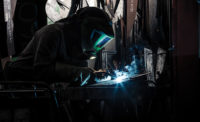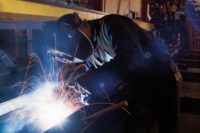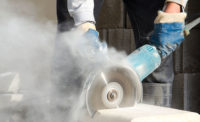 • Welders should understand the hazards of the materials they are working with. OSHA’s Hazard Communication standard requires employers to provide information and training for workers on hazardous materials in the workplace.
• Welders should understand the hazards of the materials they are working with. OSHA’s Hazard Communication standard requires employers to provide information and training for workers on hazardous materials in the workplace.
• Welding surfaces should be cleaned of any coating that could potentially create toxic exposure, such as solvent residue and paint.
• Workers should position themselves to avoid breathing welding fume and gases. For example, workers should stay upwind when welding in open or outdoor environments
General ventilation, the natural or forced movement of fresh air, can reduce fume and gas levels in the work area. Welding outdoors or in open work spaces does not guarantee adequate ventilation. In work areas without ventilation and exhaust systems, welders should use natural drafts along with proper positioning to keep fume and gases away from themselves and other workers.
• Local exhaust ventilation systems can be used to remove fume and gases from the welder’s breathing zone. Keep fume hoods, fume extractor guns and vacuum nozzles close to the plume source to remove the maximum amount of fume and gases. Portable or flexible exhaust systems can be positioned so that fume and gases are drawn away from the welder. Keep exhaust ports away from other workers.
• Consider substituting a lower fume-generating or less toxic welding type or consumable.
• Do not weld in confined spaces without ventilation. Refer to applicable OSHA regulations.
• Respiratory protection may be required if work practices and ventilation do not reduce exposures to safe levels.









